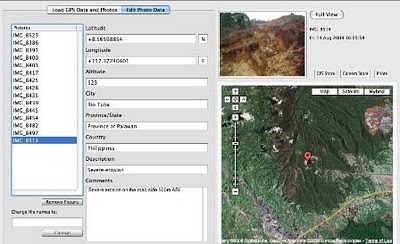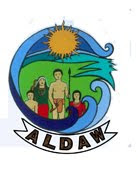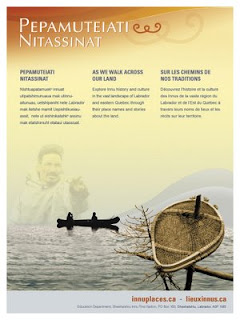The PGIS/PPGIS Global Forum [ppgis] has steadily grown, reaching a total of 1346 members as of today. Approximately 560 messages have been posted this year. The Spanish [ppgis-sp] chapter launched in 2007 has grown to a total of 113 members, while the French [ppgis-fr] and Portuguese [ppgis-pt]-speaking communities have been languishing (sorry!). Each chapter operates independently and is managed by groups of 4-6 moderators. All chapters can be reached and joined via the PGIS/PPGIS gateway http://www.ppgis.net/
On the PGIS/PPGIS Global forum [ppgis] postings and debates have been rich in terms of content and innovation. Year 2008 started with a debate on PGIS / PPGIS practice for conflict management. Amidst announcements and postings for sharing information or seeking advice, debates focused the use of PGIS practice in the development sector, understanding of PGIS vs. PPGIS, partnerships and success in PGIS, PPGIS and Vulnerability, PGIS/PPGIS indicators, fundraising for PGIS projects, P-mapping certification, PGIS for disaster response, measuring the appropriateness of PGIS, free and open source desktop GIS, land tenure before and after disasters, confidentiality of data, climate change & Google Earth, mapping with Mobile Indigenous Peoples, using P3DM, community-based mapping courses, participative methods for SDI construction, PPGIS as a participatory health promotion strategy, and CyberTracker, amongst others.
In 2008, CTA initiated a project entitled “Support the spread of good practice in generating, managing, analysing and communication spatial information”. The project is financially supported by CTA, the International Fund for Agricultural Development (IFAD), IKM Emergent and the Ford Foundation Brazil. The project The project’s overall objective is to increase the capacity of indigenous and other marginalised peoples to engage in effective policy dialogue and advocacy. The output of the initiative will consist in a freely available Multilingual, Modular, Multimedia Training Kit to be used in face to face capacity building events. The kit will be published in English and Spanish. Brazilian-Portuguese and French versions will follow. In the context of this project, CTA will soon launch a Photo Competition. More information on the project and the competition will soon be published on http://pgis.cta.int/
Here are a some other initiatives where members of this list are invited to participate and contribute:
- PPGIS/PGIS Group on LinkedIn (LinkedIn is a social- networking site used by professionals);
- http://www.ppgis.eu/ : a highly specialized Custom Search Engine reflecting knowledge and interests in PGIS/PPGIS practice and science;
- P3DM Where? is an interactive world map based on Google Map technology operated collaboratively by participatory mapping practitioners and serves for locating "participatory 3D Modelling (P3DM) exercises" worldwide;
- A Participatory Translation Initiative has been launched among members of this list last October for translating the subtitles of a video on P3DM. So far translations have been completed by volunteers for the following languages: Arabic, Fijian, Italian, Swahili and Turkish. Other 18 languages are currently being translated. The video with subtitles can be embedded on any blog of website using a code which can be obtained on the video page under the heading “share”;
- “Palawan Endangered” this recently launched initiative consists in a campaign aimed at raising awareness on the in the ongoing and planned mining activities in Palawan (and the whole of the Philippines). The campaign will make use of web 2.0 tools including Google Earth, Google Docs and Video Sharing sites and seeks volunteer contributions. Interested parties should contact palawan.endangered[at]gmail.com;
- On PPgis.Net there is a regularly updated collection of books dealing with PGIS/PPGIS practice. If you would like to recommend additional titles you should write to ppgis[at]ppgis.net
- The PGIS/PPGIS Web Ring is a “ring of websites” sharing common interests in collaborative geospatial information management practice aimed at supporting conservation and development, sustainable natural resource management, customary property rights and peer-to-peer communication. If you run a site dealing with PGIS/PPGIS practice and are interested in joining the ring, please follow this link (for webmasters).
Please note that DGroups, the platform hosting this list, is in the process of being transferred to a more up-to-date environment (Dgroups 2.0). This may cause some temporary disruption in the service. At present all postings are found here . (This may change when this list will be migrated on the new platform).
Selected collections of annotated links are found on http://www.ppgis.net/ You can use all features of this community platform after login (join) by entering your e-mail address and password. In case you forgot your password, you can retrieve it via this link.
The [ppgis] forum and related web site http://www.ppgis.net/ are run and moderated on a voluntary basis with no external financial support. Many thanks to all contributors and moderators. Thanks again for all contributions, messages behind the scene, encouragements and suggestions for improvement. Best regards and best wishes to all of you for a successful and exciting year 2009.
Giacomo Rambaldi
Moderator and List Administrator
http://www.ppgis.net/
http://www.iapad.org/
http://participatorygis.blogspot.com/






